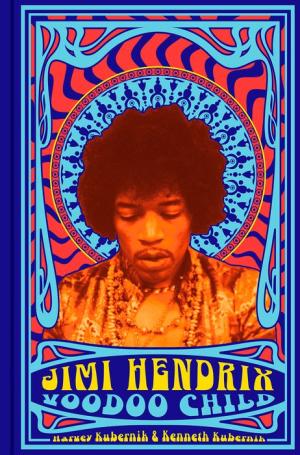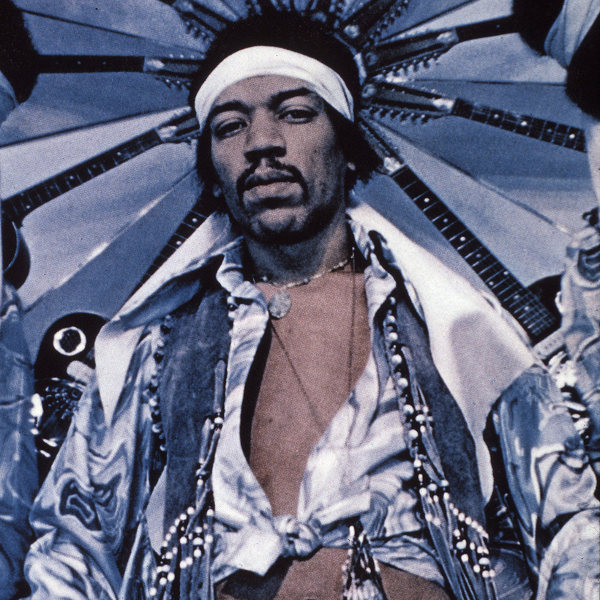ed note: This excerpt from “Jimi Hendrix: Voodoo Child” by Harvey Kubernik & Kenneth Kubernik, Sterling Books (2021) is published with permission of the authors. Part one is here. Part two is below.

Wendy Weatherford believes: “What happened there was entirely different from what happened at the Whisky and the other clubs. You went to those places to be entertained; you went to Thee Experience to be a part of it.”
Jaki Read, another waitress, recalls Hendrix “moved through the crowd like a leopard. It was the most elegant thing you’ve ever seen. People tried to touch him and sometimes paw at him in the club but he’d just quietly look at them and say, ‘That’s not cool.’ He wasn’t ‘onstage’ all the time, unless he wanted to be.”
Hollywood was Joe Lala’s fantasy, where the women were either models or would-be actresses, and they all came to Thee Experience. But when Hendrix, Johnny Winter and Rick Derringer shared the stage, it was one of the high points of Lala’s L.A. tenure. “I had to pinch myself that night,” he recalls.
Rodney jammed with Blues Image guitarist Mike Pinera and Hendrix at the club, but recalls that it wasn’t magic. “No one took the lead that night,” Rodney recalls. “Jimi was dope-sick; he didn’t play too well.” Rodney also watched as Hendrix reluctantly jammed one night. “I could tell he didn’t want to be there,” Rodney says. “Whenever they saw him, they tried to pull him onstage, but he didn’t want that. He’d see me, come over and say, ‘Let’s get out of here.’”
Drugs were prevalent at Thee Experience; if Rodney saw Hendrix there, he was usually looking to get high. Experience doorman Robert Hawkins was often bribed for admission. “I had the best zoo-zoos and wam-wams in town offered to me,” he chuckles, “Girls, too.” One observer who shared narcotics near Thee Experience with Hendrix recognized that he was an old hand at injecting.
If you saw Jimi, you often saw the bear-like Buddy Miles, an enthusiastic drummer, if not a great one. Hendrix dutifully sat in when the Buddy Miles Express played the club in August. Rockin’ Foo roadie Phil Hartmann—long before his comedy career—saw Buddy’s bass drum moving ever-forward one night, as a result of his forceful kick. On his hands and knees, Hartmann held it stable while Miles pumped away. “You’re earning your money now, Mr. Roadie Man!” shouted the self-important Miles.

Blues Image guitarist Mike Pinera shared the bandstand with Hendrix several times—once when they accompanied a bearded Jim Morrison, who just wanted to sing blues. “That was some pretty cosmic stuff,” Pinera reckons. He contends “Jimi had to have some jazz in his background to play what he did. He could play real spacey. But he could also take a Sly Stone riff and build a funk thing off of that.” Pinera was invited to follow Hendrix home one night. At the early morning party, one of the girlfriends quietly presented Pinera with a guitar case. “Here’s a gift from Jimi,” she offered. Inside was the Chet Atkins model guitar that Hendrix had played on “All Along the Watchtower.”
One Experience night, Hendrix was visibly high, and walked off to the bathroom. Pinera waited for an uncomfortable time before he decided to investigate. Inside, he saw heart-wrenching scene: an emotional Hendrix speaking to the mirror. “He said, ‘You can’t do this no more,’” Pinera recounts. “You can’t go on playin’ guitar behind your head like Chuck Berry and act like some kind of cosmic clown. You got to fire Noel and Mitch and get a band with some brothers…and you got to get that wax outta your hair and grow it out natural, and stop dressin’ like some clown…” Finally, Hendrix hydraulically left the room—completely oblivious to Pinera.
“The last time I saw Jimi at Thee Experience,” Rodney remembers, “he had a real sad look. He was on a big downer for a long time. I was only a casual acquaintance, but I was looking at a lonely man. He was warm-hearted, but he sure was down-hearted.” On September 18, 1970, less than a year later, Jimi Hendrix would be dead.
Kirk Silsbee writes about jazz and culture. He saw the Jimi Hendrix Experience three times.

Thank you for sharing that. You got it right. Debra, Editor
Larry,my brother, brought back Jimi’s first album when he came back from Viet Nam in 1967..my world changed in one second upon hearing the first note. Too bad the world was not right…it still is not right….